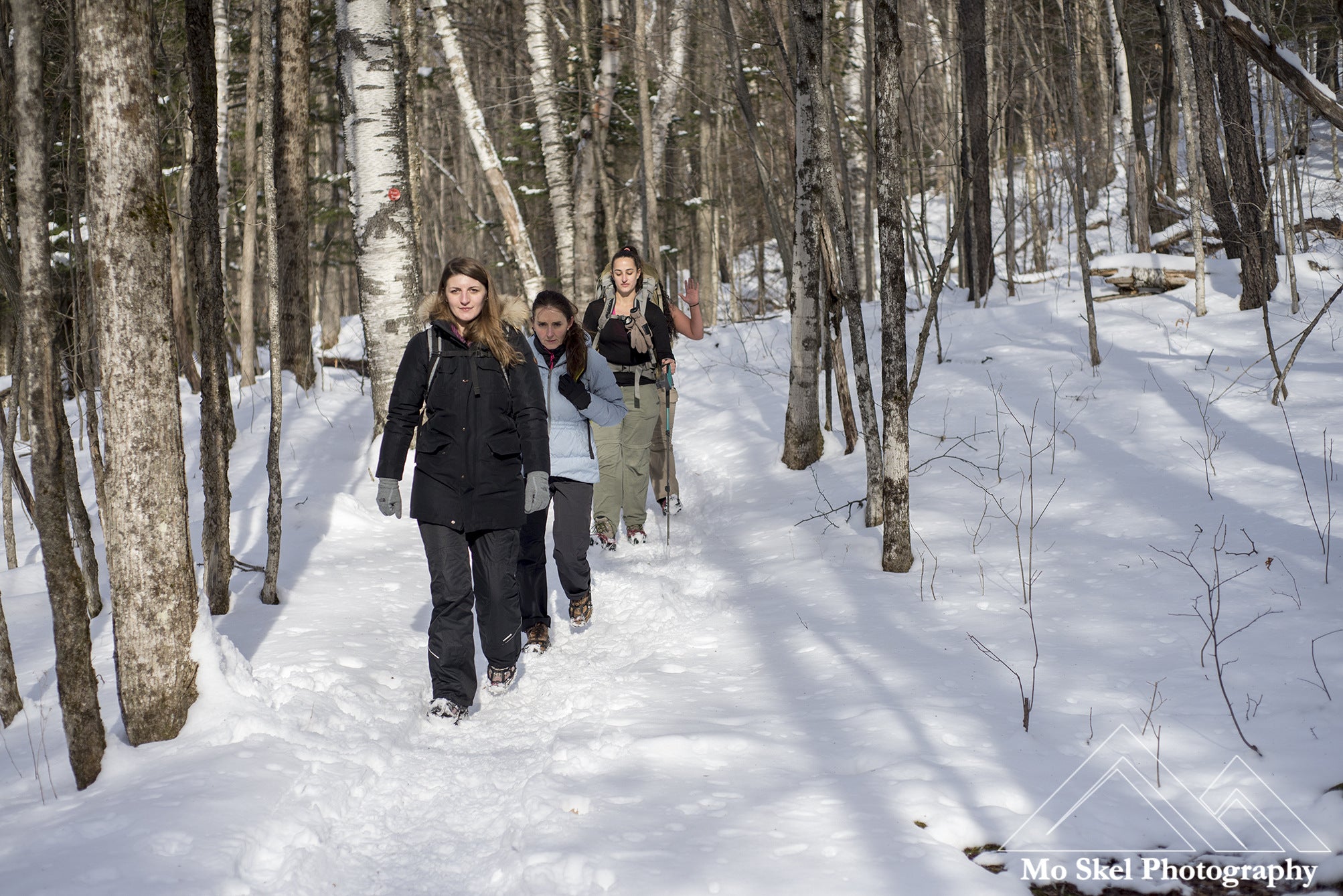How to Dress for Winter Adventure

By Dave DiCerbo
Many years ago, an inexperienced and arrogant young man set off on his first winter hike, confident that new thermals were all he needed to prepare for arctic temps in the Catskills. His mid-January climb of Indian Head mountain was as picturesque as he anticipated, and he was just as warm and comfortable as he’d hoped.
Until he stopped at the summit. A deep chill set into his body. His sweat soaked clothes felt like ice on his skin. He put on a layer, then another, but was unable to warm up. The descent back to camp became a race against hypothermia and a humbling lesson.
That young, inexperienced hiker was me on my first foray into winter hiking. Since that day, I’ve spent hundreds of days and nights enjoying cold temps while staying warm and comfortable, and many years teaching others how to do the same.
So what can my experience teach us about effective layering for cold temps? I certainly had enough gear to stay warm, but like many first time winter hikers, I didn’t know how to use it effectively. My problem was the result of overheating, even though temps were in the single digits! With a little knowledge of body heat and insulation, we can use layering and ventilation to regulate heat effectively (so we don't have to sprint down Indian Head to avoid certain death).

Role of Body Heat
While there are endless articles of clothing designed to help you stay warm in the winter, none of them provide heat—that’s all up to your body, which happens to be very good at this! When you move, your body produces remarkable amounts of heat, just like a fire! And like a fire, your body needs fuel to stay lit, so staying well nourished and hydrated is essential. No amount of clothing will warm the dehydrated and hungry adventurer—don’t let your fire go out!
Principles of Insulation
Insulation is achieved by capturing your body heat in pockets of air (“dead space”) inside and between your layers. Doing so creates a microclimate around our bodies that we must protect from heat thieves like wind and water. When wet, we lose heat 25x faster! It’s no wonder I was chilled to the bone so quickly when my base layers became soaked with sweat. Wind can chill almost as quickly as wet, cutting through our insulation if we don’t a provide an adequate outer layer of wind guard.
Role of Gear
Baselayer—Your defense against internal moisture, aka sweat.
Your baselayer is a close fitting garment designed primarily for the important task of transporting or “wicking” moisture away from the skin. Base layers are not made for insulation, but do come in varied thicknesses. A lighter weight is ideal for active, heat generating situations, like hiking up a steep trail. A medium or heavy weight with some insulation is preferable for those who chill easily or in situations where minimal body heat is being generated. Base layers are made of wool, synthetics, or a blend of the two. Synthetics dry quickly and wool insulates well when wet, so blends give you the best of both worlds.
Insulating Layers—This is where “dead space” comes alive!!!
Good examples of insulating layers would be a down vest, wool sweater, or long sleeve fleece. Each material performs differently and has different pros and cons, so a little experimentation will help you decide on the best combination for you. For example, down provides amazing insulation, is lightweight, and packs very well, yet I don’t own any down layers! Down doesn’t insulate at all when wet and takes a long time to dry out, so as someone who produces a lot of heat (and sweat), I prioritize a material that insulates well when damp, such as fleece, even though it weighs more and doesn't insulate at well as down. Insulating layers can serve as an outer layer, unless wind and precipitation call for an...
Outer Layer, aka “Shell”—Your defense against wind and external moisture
The perfect outer layer is 1) a shield against the wind, 2) completely waterproof, and 3) allows for ventilation of any sweat vapor you produce. This perfect combination out later doesn't yet exist, so we must choose which features/functions we value most. Again, it’s important to know your body and tendencies; if you’re a heat producer like me, you’ll value an outer layer that ventilates very well. If you chill easily, you will likely want an outer layer that provides exceptional protection against the wind and maybe a little additional insulation.
Accessories—Protect Ya Neck! And Head and Hands...
Adding or removing a scarf or cap at just the right time can make all the difference in regulating your temperature. I prefer mittens for warmth and gloves for the dexterity, so I often use a light glove “liner” covered by mittens. While hiking, I get the warmth and complete waterproofness of the mitten and if I need my fingers, I can remove the mittens without exposing bare skin.
Pulling It All together
Effective heat capture is a constant process. While hiking (or chopping wood, building a fire, or constructing snow shelter) it’s important to keep tabs on how much sweat you’re producing and whether you’re heating up or cooling down. Your body’s tendencies will dictate when to layer up and layer down, but this comes with knowledge and an awareness of how to use your gear. Having great gear can make all the difference in your level of comfort and survival on the trail, but without the skills and knowledge to use it, even the best gear becomes useless. Just ask a much younger Dave frantically doing sit-ups in his sleeping bag to fight hypothermic symptoms after the long trek down Indian Head. He could have appreciated more insight in layering up (and down!).


